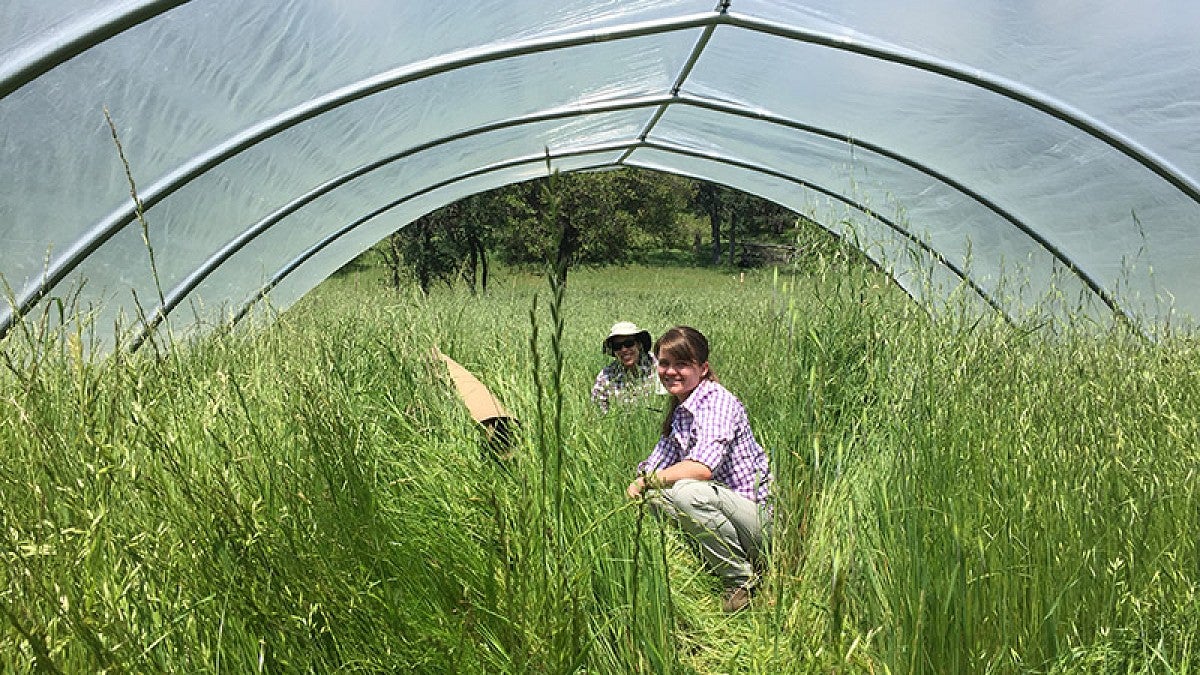UO researchers scored $172.5 million in grant funding in the past fiscal year, a new record for the university that continues a multiyear trend of research growth at the UO, according to new figures.
“Despite considerable barriers due to the pandemic, UO researchers continued our legacy of scholarship and innovation this year,” said Cass Moseley, interim vice president for research and innovation. “Faculty, staff and students navigated remote work and research disruptions and still managed to have a record-setting year.”
The grants are funding high-impact research across disciplines, such as a multiuniversity institute devoted to racial and climate justice, projects examining the impacts of climate change on biodiversity, and a push to make artificial intelligence technology more widely accessible.
It’s evidence of how the UO’s investments in recruiting, hiring and supporting new faculty members in key areas are already strengthening research at the university, Moseley said.
For example, John Arroyo, assistant professor of planning, public policy and management, is heading a grant to build the Pacific Northwest Just Futures Institute for Racial and Climate Justice. The institute, funded by the Andrew W. Mellon Foundation and hosted by the UO’s Center for Environmental Futures, includes collaborators at the University of Idaho and Whitman College. It brings together researchers focused on building an anti-racist future, with particular emphasis on sustaining Indigenous, Latinx, Black, migrant, working-class and rural communities.
And biologist Lauren Hallett scored three new grants, including an National Science Foundation Career Award, a prestigious multiyear grant for promising early-career scientists. Hallett studies the way ecological communities are adapting to a rapidly changing world. Her new funding will support work untangling the impact of climate change on numerous processes that shape biodiversity, ranging from resource availability to rainfall patterns.
Many early career faculty members secured their first major independent research award this year. For example, earth scientist Valerie Sahakian received an award from NASA to study the deformation of the earth’s crust during tsunami earthquakes. Ecologist Lauren Ponisio is leading a new NSF-funded project to track interactions between plants and pollinators in a unique mountain ecosystem in the southwestern United States. And neuroscientist Luca Mazzucato received an award from the National Institutes of Health to investigate the way serotonin affects neural circuits in the brain’s cortex.

Other highlights include:
- Two new grants for biologist Scott Hansen, including an NSF Career Award. Hansen studies the way cells signal to each other and organize within their environments, and how those processes are disrupted during disease.
- An NSF Career Award to computer scientist Lei Jiao for a project making artificial intelligence technology more accessible to individual users.
- An NSF Career Award to physicist Tien-Tien Yu for her work on finding and understanding dark matter in the universe.
- A Sloan Research Fellowship awarded to biologist Stilianos Louca to explore the evolution of microbial life.
- A China Studies Early Career Fellowship funded by the Henry Luce Foundation/ACLS Program awarded to art historian Mariachiara Gasparini, to study historical textiles along the Silk Road.
- Grants from the NSF and the National Institute for Transportation and Communities to Anne Brown, assistant professor of community and regional planning, for work around equity and accessibility in transportation, including an initiative to create an affordable, community-based ridesharing network in Baltimore.
- Funding to David Liebowitz, an assistant professor of educational methodology, policy and leadership, from the American Institute for Research as part of a project from the Bill and Melinda Gates Foundation to improve school performance and post-high school outcomes for low-income Black and Latino students.
From July 2020 through June 2021, UO researchers submitted 1,276 proposals, which netted $172 million in funding from external sources. A complete list of those research awards is available on the website of the Office of the Vice President for Research and Innovation.
Most of this year’s new funding, 71 percent, came from federal agencies, such as the National Science Foundation and the National Institutes of Health. But money also came from sources like the state government (12 percent) and private foundations and associations (10 percent).
The reported numbers do not include COVID-19 relief funds from the federal CARES Act, which added an additional $50.6 million. This supplemental money directly supported students dealing with financial hardship and helped the university rebound from pandemic-related setbacks.
“Our steady research growth for the past two years, despite the pandemic, demonstrates the strength, innovation and resilience of our faculty,” Moseley said. “It’s clear we have a very strong foundation for robust future growth.”
—By Laurel Hamers, University Communications


